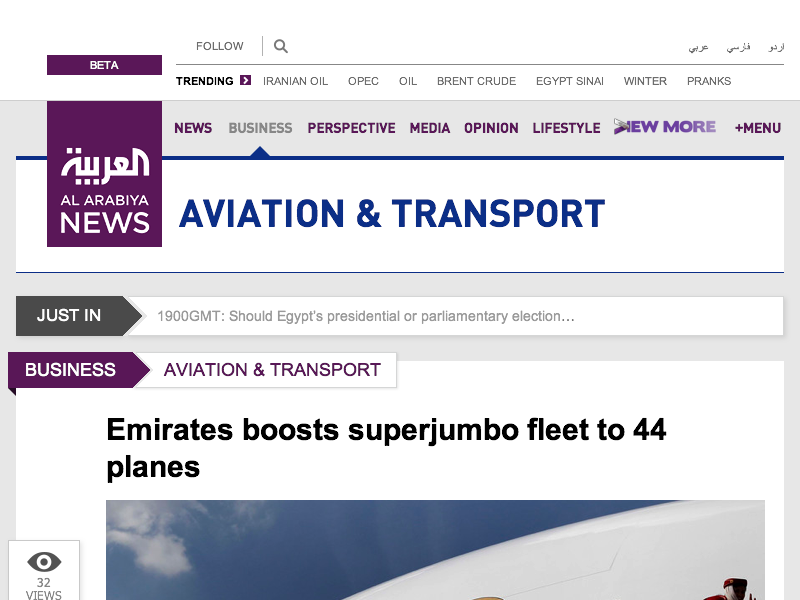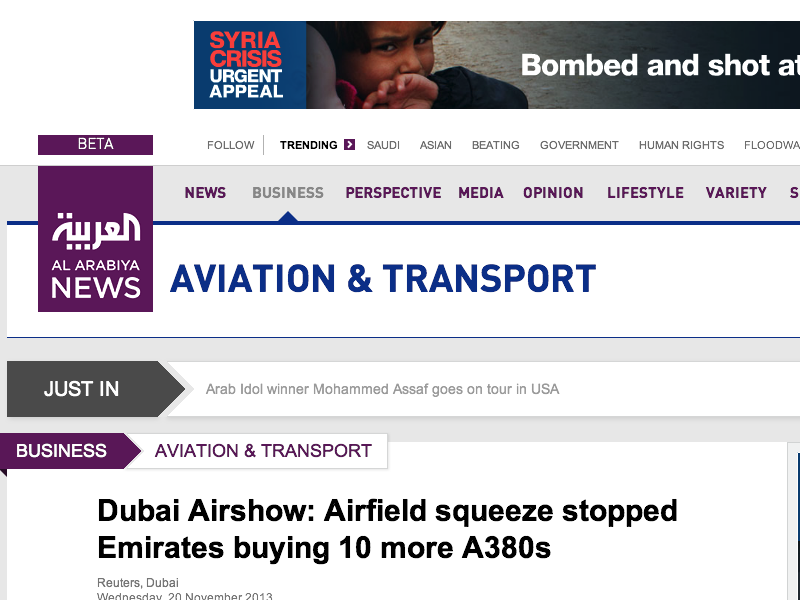News Analysis: Emirates Airlines Shows Good Foresight With Its Increased Airbus A380 Purchases since there is no ‘Equal Capacity’ Aircraft available in the world. The A380 commenced as a “Clean Slate” Design [CSD] which gave it ‘Systemic Legitimacy’ that Manufacturers seek. To wit, the Fuselage, Wings, Engines, Electronics, Etc. were all designed in consort with the Technical Requirements of Each. “Equilibrium” of Operational Efficiency in an aircraft occurs as a result. Rather than “Altering” a Wide-Body Aircraft to increase its capacity or range [which seldom works as efficiently as a ‘CSD’], the A380 stands alone in its Capacity and Efficiency.
As the World Economy Improves, the A380 will continue to prove of great value: One ‘Long Haul’ Aircraft, relative to its Capacity and Range, rather than Two or Three Smaller Twin-Engine Airplanes. If one extrapolates the Monies Needed to Equal one A380’s Capacity: Multiple Aircraft, Increased Airport Facilities, Additional Crews, Increased Support Services, and More Insurances. These are proportionately lessened by using the A380.
The Future Aircraft Needs some Airframes mention, indicates: The A380 for increased traffic on International Flights, is Imperative; Proportionately lesser so, the Smaller Twin-Engine Aircraft [due to their Aforementioned Increased Costs].
Wise Airline Management should consider both the Direct as well as Indirect Long-Term Costs for Success in this Industry.
Reference:




